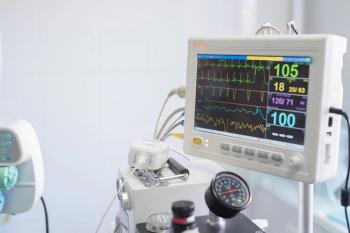The effect of maternal cortisol production on fetal development is impacted by socioeconomic status (SES), according to a recent study published in Biological Psychiatry Global Open Science.
Takeaways
- Maternal cortisol production during pregnancy can affect fetal development, and this impact is influenced by socioeconomic status (SES), according to a recent study in Biological Psychiatry Global Open Science.
- Environmental factors, particularly poverty, have been linked to changes in brain development. SES is associated with variations in brain regions, including the hippocampus and various cortical regions.
- Lower income and maternal education are linked to smaller brain volumes in infants shortly after birth, but the literature on this topic shows mixed results with some studies indicating both larger and smaller brain volumes in low-income regions.
- An association exists between low income and cortisol production during pregnancy, potentially affecting the developing brain in the womb. However, there is diversity in the methods and results of studies evaluating the impact of SES on cortisol production.
- The study found that maternal cortisol production and its impact on neonatal amygdala volume is moderated by socioeconomic status, indicating that SES plays a role in the relationship between maternal cortisol and fetal brain development.
Environmental factors such as poverty have been associated with shifts in the brain’s development. Multiple studies have found a link between SES and hippocampal volume, as well as associations between family income and surface area in many regions of the cortex.
Lower income and maternal education have been linked to smaller total gray, cortical gray, and deep gray matter volumes in infants shortly after birth. However, current literature on this subject is not consistent, with one study showing both larger and smaller brain volumes in low-income regions.
An association has also been found between low income and cortisol production, which may impact the developing brain in utero. However, literature evaluating the impact of SES on cortisol production is diverse in methods and results.
Investigators conducted a study to evaluate the associations between maternal cortisol production and their child’s brain development based on SES. There were 241 mother-infant dyads included in the sample, with infants born between 2017 and 2020 at full-term and healthy at the time of birth.
Brain imaging data was obtained no later than the sixth week of life. A latent factor score from a confirmatory factor analysis was used to evaluate the maternal psychosocial environment through maternal socioeconomic disadvantage and maternal psychosocial stress.
Maternal socioeconomic disadvantage was the primary predictor in the analysis, including information on income-to-needs ratios, education status, insurance status, neighborhood deprivation, and nutrition. Psychosocial stress includes maternal depression, discrimination experiences, life stress, and perceived stress during pregnancy.
Self-report surveys filled out during pregnancy visits were used to evaluate maternal tobacco use. Drug screening at enrollment was used alongside self-report surveys to evaluate cannabis use. Both tobacco and cannabis use were measured as binary variables.
During each trimester, participants would provide salivary samples every 4 hours across a 24-hour period. These samples were evaluated by enzyme-linked immunosorbent assay for cortisol concentrations.
A Siemens 3T Prisma scanner with a 64-channel head coil was used to complete infant imaging. Analyses of white and gray matter, cerebellum, brainstem, and subcortical gray matter structures were performed.
An association was not found between maternal prenatal cortisol slopes and maternal socioeconomic disadvantage or psychosocial stress during pregnancy, nor was psychosocial stress associated with total cortisol production. However, a positive correlation was made between socioeconomic disadvantage and total cortisol production during pregnancy.
When evaluating the cortisol area under the curve with respect to ground (AUCg) in a linear model, investigators found interactions with socioeconomic disadvantage were able to predict neonatal amygdala volume.
A significant positive relationship was found between the cortisol AUCg slope and average neonatal amygdala volume in participants with a socioeconomic disadvantage score 1 standard deviation below the sample mean. Conversely, a negative relationship was found when the socioeconomic disadvantage score was 1 above the sample mean.
These results indicated an impact of SES on the association between maternal cortisol production and fetal development of the amygdala. Investigators recommended further research to evaluate the effects of different measures of socioeconomic disadvantage in ways that improve translational impact.
Reference
Herzberg MP, Triplett R, McCarthy R. The association between maternal cortisol and infant amygdala volume Is moderated by socioeconomic status. Biol Psychiatry Glob Open Sci. 2023;3(4):837-846. doi:10.1016/j.bpsgos.2023.03.002

















